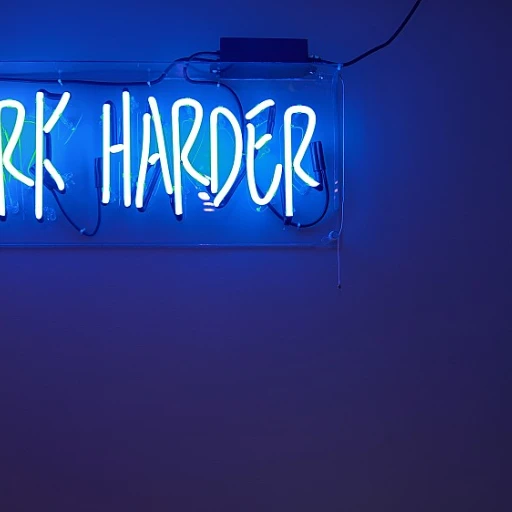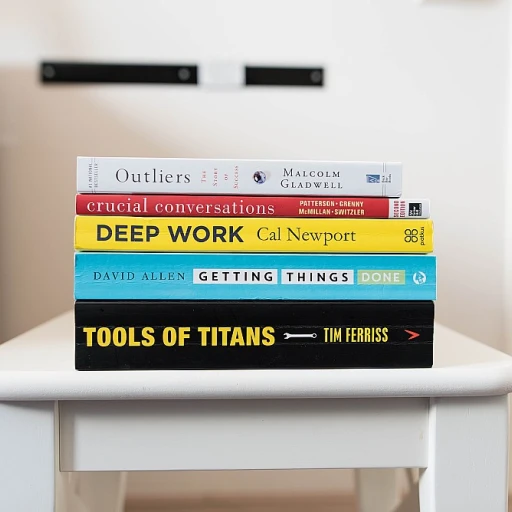Understanding the Role of a Request for Proposal
Decoding the Strategic Role of RFPs
A Request for Proposal (RFP) plays a pivotal role in the procurement process, acting as a bridge between businesses and potential suppliers. It outlines the project requirements and invites vendors to propose solutions that align with the company's needs. A well-crafted RFP sets the foundation for effective procurement by clearly communicating the project scope, timelines, and expectations to third-party providers. This ensures that vendors have a comprehensive understanding of what is required, enabling them to tailor their responses accordingly.
An effective RFP should not merely serve as a transactional document; it must facilitate a competitive bidding environment where multiple vendors can showcase their capabilities and propose value-driven solutions. This dynamic shifts the focus from simply seeking bids to nurturing strategic partnerships that contribute to long-term business goals. The clarity and precision embedded in a well-constructed RFP can significantly impact the quality of vendor responses, ultimately influencing the success of the entire evaluation process.
While the basic structure of an RFP can be standardized using templates and tools like Google Docs or free online resources, tailoring the request letter to reflect your specific project requirements is crucial. This ensures that the document not only meets general industry standards but also aligns seamlessly with your unique business objectives. Crafting a structured and detailed RFP not only improves the proposal evaluation criteria but also streamlines the selection process, leading to more informed decision-making.
In essence, the RFP process acts as a strategic negotiation and communication tool that, when optimized, can significantly enhance project management and business outcomes. General managers seeking to leverage the full potential of RFPs should focus on articulating precise project needs and maintaining strong communication channels with every stakeholder involved. This proactive approach not only optimizes the procurement process but also solidifies the project's strategic alignment with business objectives. To further enhance your understanding of delegation in the procurement context, consider exploring more insights on trusting your team.
Key Elements of a Comprehensive Request for Proposal Template
Essential Components for a Robust RFP Structure
- Project Overview: Begin with a concise summary of the project's scope and objectives. This sets the stage for potential vendors to understand the project's context and aligns them with your business goals.
- Detailed Requirements: Clearly articulate the specifications and requirements. This includes technical aspects, performance criteria, and any other business needs specific to your project.
- Submission Instructions: Outline the format and deadlines for submissions. Specify whether proposals should be sent via email, uploaded to a procurement platform, or submitted in a different manner.
- Evaluation Criteria: Provide transparency on how proposals will be assessed. Whether focusing on cost, timeline, or vendor experience, this helps in collecting responses that align with your evaluation priorities.
- Terms and Conditions: Include any legal considerations, such as confidentiality agreements or compliance requirements.
- Contact Information: Ensure there's a clear point of contact for any questions, further clarifications, or support needed during the RFP process.
By structuring your request proposal with these elements, you can draft a comprehensive proposal template that serves both your procurement process and potential suppliers effectively. Adopting templates in formats like Google Docs or Word can streamline the process, ensuring consistency and accessibility. Remember, a robust RFP not only aids in gathering competitive proposals but also fosters a clearer understanding between parties, minimizing misunderstandings and maximizing project success. For additional insights on project management and delegation strategies, you might find this article valuable.
Tailoring the RFP Template to Your Business Needs
Adapting the Template to Align with Organizational Objectives
When crafting a Request for Proposal, it's crucial to tailor the rfp template to meet the specific needs and goals of your business. The procurement process is unique to each organization, therefore the template should be adapted to reflect this individuality. Consider the project scope and how it aligns with your company's broader business strategy.
Customization is key when it comes to creating an effective proposal template. Here's what you should focus on:
- Project Specifics: Clearly outline the project requirements to ensure potential vendors understand what is expected. This includes detailed descriptions of the project scope and any particular technical demands.
- Evaluation Criteria: Define how responses will be assessed. This will help streamline the evaluation process by providing all potential suppliers with a clear understanding of the selection process, ensuring that the responses you receive are aligned with your expectations.
- Customization: Use services like Google Docs to keep your rfp documents accessible and easy to edit, promoting efficient collaboration among project management teams.
- Template Flexibility: A free rfp from a third-party might not fit every situation. Always modify these templates to suit your business requirements better.
Striking the balance between standardization and personalization will ensure that your request proposals not only attract the best proposals but also align closely with your business goals. For more on how subtle leadership strategies can amplify impact, you might find this article on silent leadership insightful.
Common Mistakes to Avoid in RFP Creation
Missteps to Sidestep in Crafting RFPs
In the complex realm of crafting a request for proposal, several challenges often emerge. Identifying these pitfalls can save both time and resources, ensuring that your project requirements are met with precision.- Overlooking Clear Objectives: Often, proposals fall short when they lack clarity in their business objectives. Whether it's defining the procurement needs or articulating the overall project scope, an RFP must meticulously outline all requirements to guide potential suppliers in their proposal response.
- Ignoring Stakeholder Input: A successful template should not be created in isolation. Stakeholders within the project management and procurement process must be consulted to ensure the RFP reflects organizational needs. Ignoring this step can lead to gaps in the proposal, affecting evaluation criteria and the eventual selection process.
- Neglecting Precise Criteria: A meticulous evaluation with well-defined criteria is paramount. When these criteria are vague or too broad, it hampers the effectiveness of the RFP process and subsequently, the selection of vendors. Proposal templates should be crafted with these specific benchmarks in mind.
- Insufficient Template Structure: A well-structured RFP is crucial. Many templates fall short because they lack a coherent organization. Utilizing word processing tools like Google Docs can help in creating a well-structured, user-friendly RFP template that guides vendors through the proposal submission process seamlessly.
- Disregarding Technology: Leveraging free online resources to assist in the RFP process can be invaluable. From streamlining document processes to enhancing the overall procurement strategy, employing technology can prevent common pitfalls, ensuring a smooth progression from proposal request to final vendor evaluation.
Evaluating Responses: Criteria and Best Practices
Evaluating the Proposals with a Strategic Eye
In the journey of navigating the request for proposal process, arriving at the evaluation phase holds significant importance. The objective is to ensure that you choose the best potential supplier for your project, ensuring alignment with your business requirements. When evaluating the different responses to your RFP, consider the following strategies to streamline the process:- Define Evaluation Criteria Clearly: Start by establishing what metrics or aspects are critical for your project before reviewing any proposals. This includes budget, timeline, quality, and previous experience. By doing so, you ensure that all evaluations are benchmarked against a consistent standard.
- Diversified Evaluation Team: Involve multiple stakeholders from various departments of your organization. This inclusion ensures a comprehensive perspective on potential vendors, balancing functional and technical insights.
- Consistent Scoring System: Develop a scoring system or rubric that aligns with your pre-set evaluation criteria. Whether using a software solution or traditional tools like Google Docs or Word, make sure your scoring mechanisms are accessible and clear.
- Detailed Proposal Review: Examine the completeness of each proposal letter. Ensure the proposal aligns with the RFP template, addressing each section comprehensively. Any overlooked requirements may indicate potential risks or misunderstandings.
- Technique of Weighted Scoring: Use a weighted scoring technique for the proposal evaluation to prioritize what matters most for your specific procurement process. For instance, if cost is more significant than timeline, reflect this in your scores.
- Potential for Future Collaborations: Assess any indications of flexibility or willingness for future cooperation in the responses. A vendor more open to customization or scaling according to your business growth is a valuable partner.
Leveraging Technology in the RFP Process
Embracing Technology for a Streamlined RFP Process
In a world where technology is transforming how businesses operate, leveraging digital solutions in the request for proposal process can significantly enhance efficiency and accuracy. Modern tools can simplify the crafting of RFP documents, manage communications, and facilitate effective evaluation of vendor responses.
Here are some ways technology can be integrated into your RFP process:
- Automated RFP Templates: Use technology to create dynamic RFP templates that can be adjusted based on your project requirements. Automated tools allow businesses to use templates stored in formats like Google Docs or Word, making it easier to tailor documents without starting from scratch each time.
- Centralized Communication Platforms: Digital platforms can centralize communication, ensuring that all proposal information and vendor responses are organized and easily accessible. This reduces the risk of data loss and ensures that everyone involved in the proposal process remains informed.
- Evaluation Software: Use specialized software to evaluate proposals using pre-defined evaluation criteria. This allows for more objective and data-driven assessment of potential suppliers, facilitating better procurement decision-making.
- Free and Paid Tools: Explore both free rfp tools and paid solutions to find the right fit for your business. The choice between these options can depend on the complexity of the projects and the available budget.
- Project Management Integration: Incorporate project management tools to oversee the entire RFP process from initiation to completion. This integration ensures that all stages are monitored and aligned with the overall business objectives.
By streamlining the RFP process through technology, businesses can not only make their processes more efficient but also build more effective and strategic partnerships with vendors.




